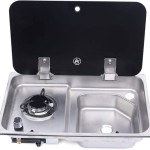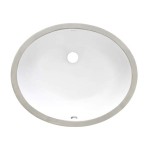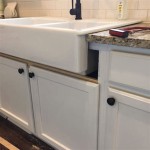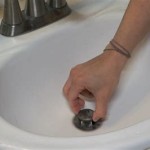Sink Front Tip Out Trays: Enhancing Kitchen Organization and Hygiene
Sink front tip out trays, also known as false front drawers or sink front trays, are a valuable yet often overlooked element in kitchen design. These discreet storage solutions, installed behind the decorative panel in front of the sink, offer a practical and hygienic method of storing frequently used kitchen items. This article will explore the benefits, types, installation considerations, and maintenance aspects of sink front tip out trays, providing a comprehensive understanding of their role in optimizing kitchen space and promoting cleanliness.
Benefits of Sink Front Tip Out Trays
The primary benefit of a sink front tip out tray lies in its efficient utilization of otherwise wasted space. The area directly in front of the sink is often left unused due to plumbing and cabinet construction. Sink front tip out trays transform this void into a functional storage area, allowing for the organized storage of sponges, scrub brushes, dish soap, and other cleaning supplies. This reduces clutter on the countertop and within the sink basin, contributing to a cleaner and more visually appealing kitchen environment.
Another significant advantage is improved hygiene. By providing a dedicated storage location for cleaning tools, sink front tip out trays prevent these items from resting directly on the countertop or in the sink itself. This minimizes the potential for bacterial growth and the spread of germs. The tray itself can be easily removed and cleaned, further promoting a hygienic kitchen environment. Properly storing wet sponges and brushes also allows them to air dry more effectively, which inhibits bacterial growth and extends their lifespan.
Furthermore, sink front tip out trays enhance the overall kitchen organization. By keeping cleaning supplies readily accessible but out of sight, these trays contribute to a more streamlined and efficient workflow in the kitchen. No longer is it necessary to rummage through drawers or cabinets to locate a sponge or dish soap. Everything is conveniently located directly in front of the sink, saving time and effort during daily chores.
Types of Sink Front Tip Out Trays
Sink front tip out trays are available in a variety of materials, sizes, and configurations to suit different kitchen designs and storage needs. The most common materials include plastic, stainless steel, and wood. Plastic trays are generally the most affordable option, offering durability and ease of cleaning. Stainless steel trays provide a more upscale look and are highly resistant to corrosion and staining. Wood trays can be customized to match existing cabinetry, creating a seamless and aesthetically pleasing appearance. However, wood trays require more careful maintenance to prevent moisture damage.
In terms of size, sink front tip out trays are typically available in standard widths to accommodate common sink base cabinet sizes. The depth and height of the tray can also vary, depending on the desired storage capacity and the available space behind the sink front. Some trays are designed with multiple compartments or dividers to further enhance organization.
The mechanism for opening and closing the tray can also differ. Some trays feature a simple hinge system, while others utilize a more sophisticated soft-close mechanism for smooth and quiet operation. The choice of mechanism will depend on personal preference and budget.
There are also variations that incorporate specialized features. Some models include removable drip trays to collect excess water from sponges and scrub brushes, preventing moisture damage to the cabinet interior. Others are designed with ventilation holes to promote airflow and further inhibit bacterial growth. Some premium options may even include built-in organizers for specific cleaning supplies.
Installation and Maintenance Considerations
Installing a sink front tip out tray is a relatively straightforward process that can typically be completed by a homeowner with basic handyman skills. However, proper planning and preparation are essential to ensure a successful installation. Before purchasing a tray, it is crucial to measure the available space behind the sink front to ensure that the tray will fit properly. It is also important to consider the location of plumbing pipes and other obstructions that may interfere with the installation.
The installation process typically involves removing the existing decorative panel from the sink front, attaching the tip out tray to the panel using screws or adhesive, and then reattaching the panel to the cabinet. It is important to follow the manufacturer's instructions carefully to ensure proper alignment and secure attachment. Depending on the type of tray and the construction of the cabinet, some minor modifications may be required, such as drilling pilot holes or trimming the panel slightly.
Maintaining a sink front tip out tray is relatively simple. Regular cleaning is essential to prevent the buildup of dirt, grime, and bacteria. The tray should be removed periodically and washed with warm soapy water. If the tray is made of wood, it is important to dry it thoroughly after washing to prevent moisture damage. Stainless steel trays can be cleaned with a stainless steel cleaner to maintain their shine. It is also advisable to periodically inspect the hinge mechanism and tighten any loose screws.
For wooden sink front tip out trays, it is important to consider the humidity levels in the kitchen. Excess moisture can cause the wood to warp or crack. Consider applying a sealant or varnish to the wood to protect it from moisture damage. Additionally, avoid placing excessively wet items directly on the wood surface.
When choosing cleaning products to store in the tray, be mindful of potential leaks or spills. Consider using containers with secure lids or storing liquids in a separate, leak-proof container within the tray. This will help prevent damage to the tray and the surrounding cabinet.
The longevity of a sink front tip out tray depends on the quality of the materials, the installation, and the level of maintenance. With proper care, a well-installed tray can provide years of reliable service, enhancing the organization and hygiene of the kitchen.
Choosing the right sink front tip out tray requires careful consideration of several factors, including the available space, the desired storage capacity, the material preferences, and the budget. By carefully evaluating these factors, homeowners can select a tray that meets their specific needs and enhances the functionality and aesthetics of their kitchen.
In conclusion, sink front tip out trays represent a simple yet effective solution for optimizing kitchen space and promoting cleanliness. By providing a dedicated storage location for cleaning supplies, these trays contribute to a more organized, hygienic, and efficient kitchen environment. Understanding the different types of trays, installation considerations, and maintenance requirements is essential for maximizing the benefits of this valuable kitchen accessory.

Rev A Shelf Polymer Tip Out Trays For Sink Base Cabinets 6572 14 11 52 The Home

14 White Polymer Tip Out Sink Front Trays And Hinges

Cut To Size Sink Front Tip Out Trays

Set Of 2 14 Kitchen Cabinet Sink Front Tip Tilt Out Tray Hinges Deep

Sink Front Tip Out Tray Rev A Shelf 6572 Series 11 Wide

Rev A Shelf 6581 19 52 Stainless Steel Tip Out Tray

Rev A Shelf 6541 36 15 Eth Inch Width Slim Series Tip Out Tray With Euro Hinges Almond

Sink Front Tip Out Trays Cabinet Joint

Rev A Shelf Polymer Tip Out Trays For Sink Base Cabinets

Rev A Shelf 10092896 9 Chrome Euro Face Frame Hinges For Tip Out Tray







